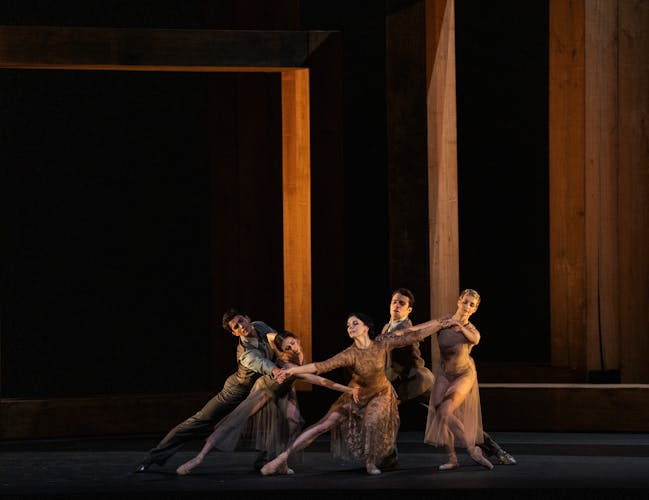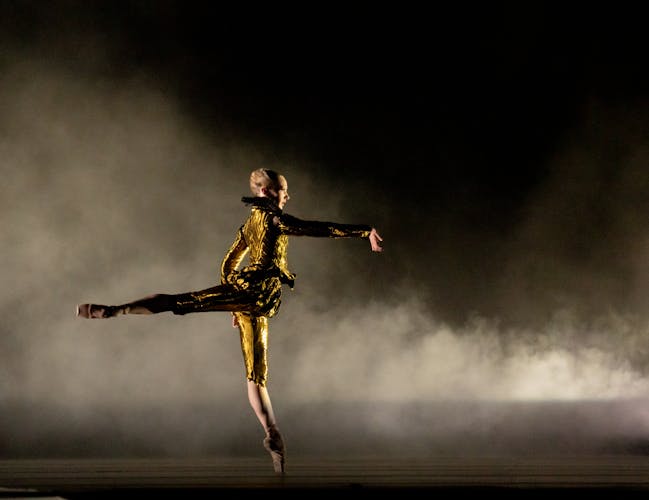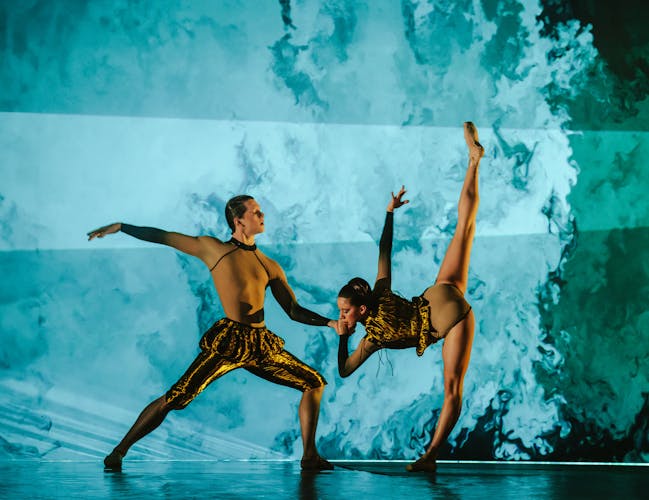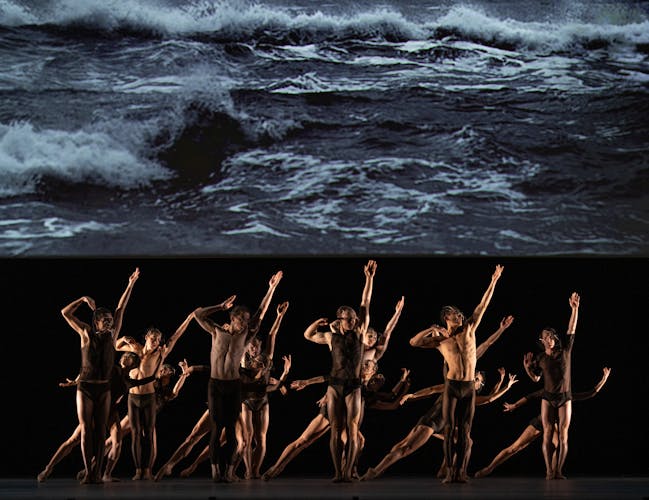Ballet Essentials: Woolf Works
Our guide to Woolf Works, the experimental ballet triptych inspired by the genre-defying works and writings of Virginia Woolf.
Virginia Woolf was an English writer and modernist icon whose works continue to provoke powerful responses today. One of most groundbreaking writers of 20th-century, she defied literary conventions to depict rich inner worlds – her heightened, startling and poignant reality.
Inspired by Woolf’s genre-defying works and writings, Resident Choreographer Wayne McGregor created his experimental ballet triptych, Woolf Works, set to an original score by Max Richter.
Quick Facts
Why is Virginia Woolf so influential?
Virginia Woolf is considered one of the most influential 20-th century authors of the modernist movement largely due to her literary innovations, such as the use of the stream of consciousness technique, and her rejection of the traditional literary conventions of the time.
What is Virginia Woolf’s famous works?
She is most well-known for Mrs Dalloway, To the Lighthouse, Orlando, The Waves, The Years, Between the Acts and her feminist essay A Room of One’s Own.
Which of Virginia Woolf’s novels inspired Woolf Works?
Woolf Works is inspired largely by Mrs Dalloway, Orlando and The Waves, but also the themes, ideas and innovations of her other writings.
Who choreographed Woolf Works?
Woolf Works is choreographed by Wayne McGregor, The Royal Ballet’s Resident Choreographer.
Who composed the music for Woolf Works?
Woolf Works features music composed by Max Richter. The score is an original commission for the ballet.
To find exclusive souvenirs and gifts inspired by McGregor’s ballet: explore the Woolf Works collection at the Royal Ballet and Opera Shop.
Gallery
Synopsis
I now, I then (from Mrs Dalloway)
Mrs Dalloway, Woolf’s 1925 stream of consciousness novel, is set over the course of one day and alternates between two stories: a society hostess preparing for an important party and a shell-shocked war veteran on his way to a psychiatric assessment. Though they never meet, both Clarissa, the protected insider and Septimus, the social outcast, are haunted by the past. Opening with an excerpt from Woolf’s recorded essay, On Craftsmanship, I now I then is a journey into the writing of Mrs Dalloway, interweaving narrative fragments from the novel with aspects of Woolf’s autobiography including the experience of drawing on her own mental illness as subject matter.
Becomings (from Orlando)
‘on or about December 1910 human nature changed’ – Virginia Woolf
Written in an epoch of recalibration in every sphere including the roles and rights of women, modes of representation in art and literature, and rapid advances in cosmology, Woolf’s iconoclastic 1928 novel Orlando centres around a fantastical figure who journeys through three hundred years without growing old, and changes sex along the way. Relationships prove transient, even with himself, while relativity and plasticity define her experience of time and space. Becomings presents Orlando’s dizzying wide-angle vision of a vast, ever-altering universe in which life is energy passing through a multiplicity of forms – a brief, gorgeous flaring of insect wings, gestating, emerging, extinguishing and moving on.
Tuesday (from The Waves)
Grand and elegiac, The Waves (1931) is Woolf’s most experimental novel, conceived in response to her own childlessness and the contrasting fierce maternity of her sister Vanessa. In the novel, the voices of six people growing from childhood to old age are punctuated by symbols of natural decay and renewal, the most important of which is the ever-returning sea. Responding to Woolf’s unique fascination with underwater imagery in all her writing, Tuesday merges themes of The Waves with a portrayal of the writer’s suicide by drowning. As Woolf counts her steps towards the river Ouse and her final journey, so too the world of her novel moves towards abstraction and silence.
Virginia Woolf
Virginia Woolf was a renowned English novelist and essayist regarded as a key figure of 20th century modernist literature. Born in London on the 25 January 1882, she went on to become a member of the Bloomsbury Group, a circle of English writers, which included her husband, Leonard Woolf.
Woolf is known for her stream-of-consciousness novels, such as Mrs Dalloway, Orlando and To the Lighthouse. She was also a huge champion of gender equality and believed that education and professions should not only include women but radically change to include the female point of view. Her work, notably A Room of One’s Own, capture her passion for women’s economic independence.
Woolf struggled with mental illness throughout her life, suffering her first mental breakdown at age 14 after the death of her mother. She passed away by suicide in 1941 following a period of intense depression.
History
English choreographer Wayne McGregor was appointed Resident Choreographer in 2006, The Royal Ballet’s first from a contemporary dance background. Woolf Works was the first full-length ballet created by Wayne McGregor for The Royal Ballet.
The work premiered in 2015 and saw the return of Principal dancer Alessandra Ferri to the Royal Opera House. Ferri created the principal role of Virignia Woolf. Wayne McGregor would be awarded Critics Circle National Dance Award for Best Classical Choreography as well Best New Dance Production for Woolf Works at the Olivier Awards. Ferri also won two awards for her performance in the ballet: Best Female Dancer at the Critics Circle National Dance Awards and Outstanding Achievement in Dance at the Olivier Awards.
McGregor has achieved great renown as a master collaborator and innovator in the field of dance: pushing the boundaries of the art form by defying traditional conventions, engaging with other mediums and working with a diverse breadth of creatives. Woolf Works similarly demonstrates this. The innovative ballet captured the heart of Woolf’s uniquely artistic spirit through the potent imaginations of its artistic team, including contributions by composer Max Richter, costume designer Moritz Junge, architectural practices Ciguë and We Not I, lighting designer Lucy Carter, film designer Ravi Deepres, make-up designer Kabuki, sound designer Chris Ekers and dramaturg Uzma Hameed.
Music
For Woolf Works, McGregor commissioned a new score from the acclaimed British composer Max Richter. Richter is one of McGregor’s longstanding collaborators: together they’ve worked on the ballet Infra and on Richter’s chamber opera Sum. Richter and McGregor also worked together on the score for MaddAddam; a ballet based on the work of another renowned female author, Margaret Atwood. For this new ballet Richter combined orchestral forces with electronics to create a score that shifts between mesmerizing, perpetually unfolding musical material and thrilling surround sound.
Richter weaves fragments of Woolf’s letters, diaries, and essays into the music to capture the novelist’s voice. The only surviving audio recording of Woolf reading from her essay Craftsmanship opens the ballet in one of the scores spoken word sections, which also includes passages performed by Gillian Anderson.
The process of finding the musical languages for the three sections of Woolf Works was two years of theorizing, planning, research and experiment. The three novels are distinct universes, each needing their own coherent musical grammar, and yet the ballet needed to hold together, to have an overall musical fingerprint, embodying the voice of the author. Finding a way to reconcile these demands was the fundamental question, and led Richter to a hybrid language: the score for Woolf Works uses the traditional orchestra, soloists, real-time and pre-recorded electronic music, live digital signal processing and spatialization.
Choreography and Dramaturgy
For McGregor and dramaturg Uzma Hameed, the choice of Virginia Woolf as the source of inspiration for a new ballet was obvious. Hameed writes in the programme:
‘For one thing, Woolf herself was fascinated by dance and absorbed aspects of its language into her own creative process to generate writing that was rooted in feeling and the body, as much as in the brain... Then, of course, there is the way that her fiction shifts the focus from the outer details of life to the rich inner narrative unfolding continuously within the mind; she plunges us into a world in which events are strung together thematically rather than chronologically, and the fabric of emotion and sensation appears denser than the brittle world of objects. All of this might be seen as the natural territory of dance.’
Woolf’s signature non-linear writing style uses multiple perspectives, feelings and moments to create abstract narratives. In keeping with this collage of ideas and moving away from traditional narrative storytelling in ballet, Woolf Works draws on three of Woolf’s most loved novels: Mrs Dalloway, Orlando, and The Waves. The ballet takes inspiration from Woolf’s own life and experiences by including her letters, essays and diaries. The result is a ballet that re-creates the heightened world of Virginia Woolf as dramaturg Uzma Hameed explains:
‘More than anything, we wanted watching the ballet to feel like reading Woolf – to convey the luminosity, sonorousness and poignancy of her world, the absolute modernity of her vision’.
Watch more
- Main Stage
Woolf Works
- Ballet and Dance
Echoes, memories, words...
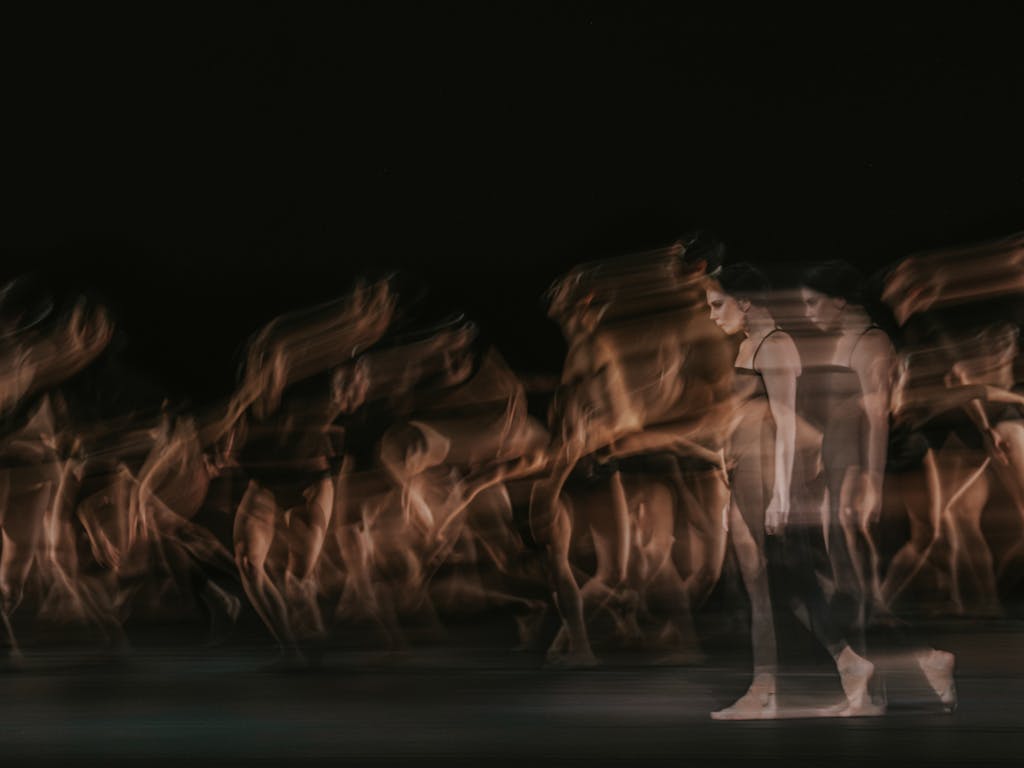
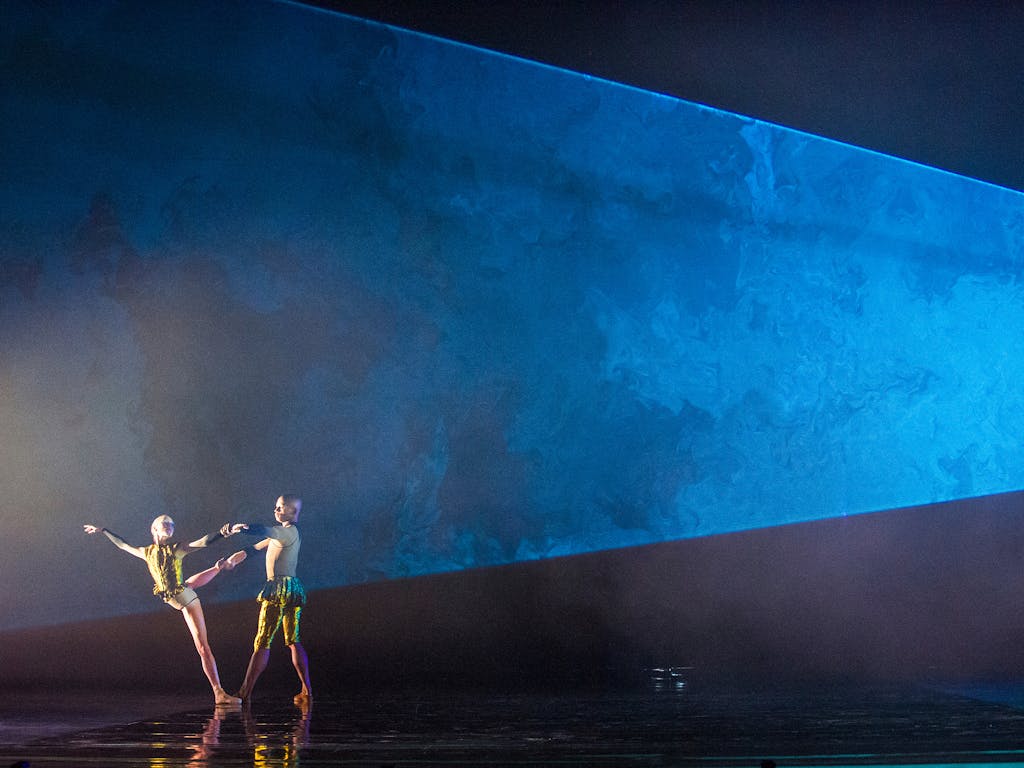
Watch on stream
Wayne McGregor’s award-winning ballet triptych is inspired by the writings of Virginia Woolf, with an original score by Max Richter.
